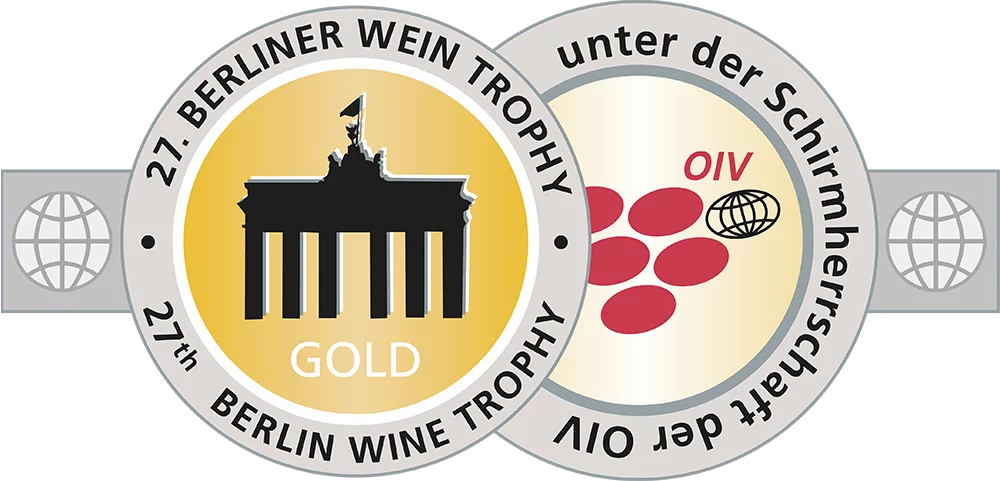currently 165,836 Wines and 25,046 Producers, including 3,208 classified producers.

GOLD |
Trittenheimer Apotheke Riesling Kabinett
2019 - Berliner Wein Trophy |

|

GOLD |
Graacher Himmelreich Riesling Spätlese
2019 - Berliner Wein Trophy |

|

GOLD |
Graacher Himmelreich Riesling Kabinett
2019 - Berliner Wein Trophy |

|
 0.75 L
0.75 L
 0.75 L
0.75 L
 0.75 L
0.75 L
 0.75 L
0.75 L
 0.75 L
0.75 L
 0.75 L
0.75 L
The "Bischöfliche Weingüter Trier" (Trier Episcopal Wineries), with its headquarters in Trier, was formed in 1966 through the merger of the previously independent wineries of the shareholders. The partners are the "Hohe Domkirche Trier" (founded in 1851), the "Bischöfliches Priesterseminar Trier" (founded in 1773) and the "Bischöfliches Konvikt Trier" (founded in 1840). All three thus have an extremely long tradition in viticulture and were among the founding members of the Association of Natural Wine Auctioneers (today VDP), whose philosophy of producing wines with "natural alcohol content" at that time is still shared by the Bischöfliche Weingüter Trier today. Dr Karsten Weyand is the managing director of the winery. Johannes Becker is responsible for oenology; Klaus Backes and Stephan Bigus act as winery managers.
The Bischöfliche Weingüter Trier originally cultivates around 100 hectares of vineyards. Since 2003, the Friedrich-Wilhelm-Gymnasium vineyard has also been part of the estate. Together, the wineries have around 130 hectares of vineyards on the Moselle, Saar and Ruwer in numerous top vineyards. On the Moselle, for example, these are Apotheke (Trittenheim), Domprobst and Himmelreich (Graach), Goldtröpfchen (Piesport), Treppchen (Erden), Würzgarten (Ürzig) and Matheisbildchen (Bernkastel). On the Saar, these are the single vineyards Hofberg (Falkenstein), Altenberg (Kanzem), Kupp and Herrenberg (Ayl), as well as Kupp and Scharzhofberg (Wiltingen). And on the Ruwer, these are the single vineyard sites Marienholz (Eitelsbach), as well as Kehrnagel and Nies'chen (Kasel).
The top priority in the production of the wines is quality and character. This includes the preservation of traditional artisanal techniques (around 70% of the grapes are harvested and selected by hand), sustainable viticulture and respect for nature and people. The grapes are pressed at the Scharzhof on the Saar and at the Duisburger Hof on the Ruwer. The wines are matured in the middle of Trier's city centre in the extensive vaulted cellars that date back to Roman times. The Bischöfliche Weingüter Trier (Bishop's Wineries Trier) have made it their task to preserve the elaborate and labour-intensive steep-slope viticulture and to protect the associated wine cultural heritage along the three river valleys. According to the objective, this is not only an important economic factor for the region, but also of immeasurable value internationally.
The focus is on Riesling, which accounts for about 90%. The rest are the white wine varieties Pinot Blanc and Elbling and the red wine varieties Pinot Noir, Pinot Noir and St. Laur ent. The quality hierarchy consists of the Dom and Schiefer collection levels as estate or varietal wines, local wines and single vineyard wines. Each level has its own label, for which, in the case of the local and single-vineyard wines, a printing stone from the 1902 vintage of the Episcopal Seminary of Trier found in the cellar served as a model. The wines are matured in stainless steel or traditionally-classically-in 240 oak barrels and some double barrels without the addition of pure yeasts. High-quality Riesling wines and all Burgundy wines are always fermented and matured in Fuder or double-piece barrels and then bottled immediately before the next harvest. Some wines, such as Réserven and Spätburgunder, are vinified in the Fuder and Doppelstück for considerably longer. In suitable years, Beerenauslesen, Trockenbeerenauslesen and ice wines are also vinified. Traditional bottle-fermented sparkling wines, such as Scharzhofberger, are also produced. Many old Riesling vintages are stored in the treasure chamber.